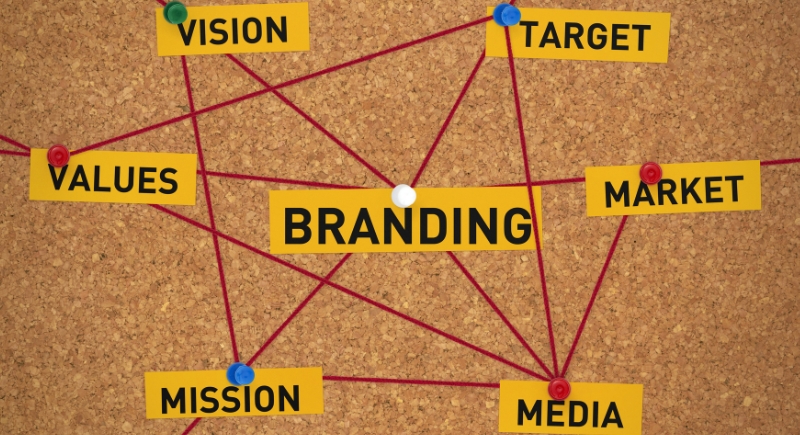Kevin Harrington, the original “Shark Tank” investor and pioneer of the infomercial industry, has reviewed over 50,000 pitches and built more than 20 companies, each of which surpassed $100 million in sales. He’s known for launching iconic products and mentoring entrepreneurs and has spent decades in the room with founders and decision-makers. After all that, he’s seen how certain habits quietly stall growth.
These aren’t rare or dramatic errors, but small misconceptions that show up in day-to-day choices. He points to these missteps as the ones that cost the most in the long term.
Relying on Just One Way to Market

Credit: pexels
When infomercials thrived, some companies treated TV as the only strategy. Harrington saw those businesses vanish when airtime costs spiked or formats changed. As customers shift their focus, the question becomes: Do you have another way to reach them? One outlet performing today doesn’t mean it’ll work next month.
Ignoring Digital Platforms Completely

Credit: Getty Images
Businesses that stall building a digital presence fall behind fast. Most consumers now discover products through social feeds or online search. When Harrington noticed attention moving from television to mobile, he made the switch right away. He didn’t wait for declining returns to force action.
Slowing Down After Initial Wins

Credit: Getty Images
Teams may assume that early traction means lasting recall. That assumption leads to a slow collapse. The American businessman watched it happen repeatedly—products lost momentum once teams reduced outreach. Even well-received launches can vanish if you stop reminding people why they exist.
Trying to Handle Every Piece Alone

Credit: pexels
You might understand your product deeply, but that doesn’t make you an expert in hiring, finance, or supply chain management. Harrington moved faster once he brought in individuals who filled those gaps. He knew that controlling every task would only slow his progress. Doing too much alone creates bottlenecks and burns hours that could grow the company.
Confusing Networking with Collecting Contacts

Credit: Getty Images
One person who will vouch for you carries more weight than a hundred who barely remember your name. What matters isn’t how many people you’ve met—it’s who would actually speak up for you. If no one replies when you reach out, the number of contacts you have won’t mean much.
Avoiding Vulnerability at All Costs

Credit: Getty Images
In Harrington’s experience, progress returns the moment someone admits they’re stuck. He doesn’t view asking for help as a weakness. Delaying that conversation defers viable solutions. Founders sometimes stay silent out of fear, especially after raising money or making bold claims. But pretending to know everything creates blind spots.
Not Calculating the Time Cost

Credit: pexels
An offer might look great—until you calculate what it drains from your schedule. Harrington often weighed hours more heavily than dollars. He’s turned down promising deals that required too much involvement. He knew that meetings, follow-ups, and reviews would eat up his bandwidth.
Waiting Around for the Right Time

Credit: Getty Images
What if you invested months refining a product, aligning every detail, and waiting for the right conditions, only to see a competitor release a less developed version and take the lead? In that moment, precision begins to feel like a delay. The opportunity shifts, and what once seemed on time now lags behind. This is a common outcome in business. Plans held too long tend to lose relevance.
Overlooking the Role of Cash Flow

Credit: Getty Images
Revenue might look great on paper, but if cash flow is off, survival gets shaky. Harrington has seen businesses burn out from delayed receivables, bloated expenses, or fixed costs they couldn't unwind. One founder doubled their team after a funding round, then couldn’t make payroll when sales lagged a quarter. Profitability matters, but so does timing.
Building Without Knowing the Customer’s Actual Problem

Credit: Getty Images
Some teams develop features, scale operations, and chase metrics—only to realize they never defined what problem they’re solving. Growth without understanding the customer leads to wasted resources and missed signals. If the core issue isn’t well understood, even a polished product can feel disconnected in the market.
Doubting You Deserve Success

Credit: Getty Images
Many founders struggle with funding and marketing, but most of all, they wrestle with believing they belong. Harrington recalls conversations where someone had the right idea but wouldn’t pitch it strongly, ask for a bigger deal, or follow up with confidence. That hesitation shows; Investors can feel it, and teams tend to mirror it.
Making Brand Decisions by Personal Taste

Credit: Getty Images
Just because you like the color scheme or font doesn’t mean your market will. Building a brand should reflect your market’s trust language, not your aesthetic preferences. If data says a headline performs, ignoring it for personal reasons is ego, not strategy. Remember, the strongest brands are flexible enough to grow with feedback.
Ignoring Exit Options Until It's Too Late

Credit: Getty Images
During one of the American businessman's first few ventures, he entered acquisition talks with strong numbers but unstructured operations. The books were incomplete, ownership rights were unclear, and critical agreements weren’t documented. That lack of preparation caused the deal to fall apart. Afterward, he began treating exit readiness as part of the business model.
Treating Hiring Like a Side Task

Credit: 89Stocker
A single employee who misaligns with the work can derail timelines, frustrate clients, and complicate decision-making. In smaller companies, the impact multiplies since every person carries weight. What owners tend to overlook is that taking shortcuts during recruitment often leads to months of course-correction, costing far more than the time saved upfront.
Skipping a Real Business Plan

Credit: Getty Images
A good idea without a structured plan turns chaotic quickly. Harrington has reviewed thousands of pitches, and the red flag is always the same: no market analysis, distribution logic, and no customer lifecycle mapped. Instead of writing a 40-page document, it’s important to start by having clarity about your goals.
